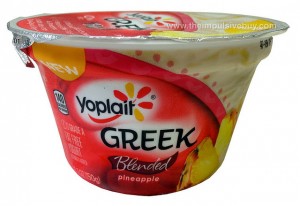Food and beverage makers face a slew of competition each time they roll out new products, and retailers have tough decisions to make when it comes to merchandising to maximize sales and profit margins.
While it may sometimes seem like retail shelves are packed with new food and beverage products, the reality is that brands have released fewer new products in recent years, according to a study from Catalina Personalized Digital Media. The number of new product releases dipped 4.2% and 4.6% in 2013 and 2014 respectively.
A mere 0.7% of consumers accounted for 80% of sales volume for 50 new top-selling food and beverage products, according to the 2015 report. Further, only 23% of first-time buyers made repeat purchases and 11% of consumers who tried the new products in the 26 weeks after the launch were still buying it by the next 26-week period, the study found.
“While there are many factors that influence the success of new products, the ability to efficiently reach and influence likely triers and repeat buyers is one of the most important,” the report says.
Thirty-three out of the 50 new products in the study were extensions of existing lines, including Nature Valley Greek Yogurt Protein Bars, Mountain Dew Kickstart, Yoplait Greek Blended yogurt and Sara Lee Snack Cakes.
Timing and targeted marketing that reaches the prospective buyers when the products are available at their local stores are key to driving initial sales, the report says.
“[W]ithout a vehicle to drive awareness, only a small percent of potential triers will become organically aware and try the product. Meanwhile retailers begin assessing item velocity and consumer demand before mass media is activated, potentially resulting in the item being discontinued.”
Even as brands work to build demand and sales for new products, they also have to evaluate their existing portfolios and figure out when and how to jettison slow sellers and rebalance the mix in favor of faster-moving products, according to a white paper on CPG portfolio management from Salient Management Company.
The number of stock keeping units in the typical fast-moving consumer goods company’s portfolio has tripled in the past decade, but as much as 40% of a given portfolio is comprised of slow-moving products that contribute less than 3% to total sales, the Salient report says.
Slow sellers drag down profit margins both because of the discounts brands and retailers use to try and move the products and the advertising and marketing dollars spent with little return on investment.
The report recommends replacing traditional periodic SKU rationalization with a system of continually evaluating the portfolio to identify and weed out slow sellers more quickly. Such systems provide key data to decision makers throughout the supply chain, from portfolio managers in the corporate office to account managers on the ground, the report says.
“The ideal approach to managing a portfolio combines a strategic perspective on what role in the market each brand, product or package plays for a company, with an analytical process that creates actionable intelligence which, when acted upon, will create a positive financial impact.”
__________________________________________________
If you enjoyed this article, join SmartBrief’s email list for more stories about the food and beverage industry. We offer 14 newsletters covering the industry from restaurants to food manufacturing.
